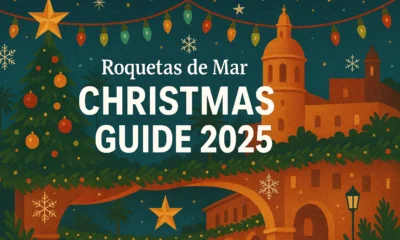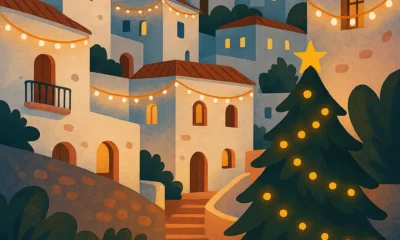Towns & Villages
Mojácar 2025 Village Guide. What to do in Mojácar?
Published on May 29, 2025 | Category: Towns & Villages
Discover where to eat, stay, and explore in Mojácar.
Mojácar, Almería: A Complete Travel & Visitors Guide for 2025
Table of Contents
- Overview of Mojácar Almería
- Top Historic and Cultural Sights
- Where to Eat in Mojácar
- Personal Hygiene & Fashion
- Where to Stay in Mojácar
- Real Estate in Mojácar
- Things to Do in and Around Mojácar
- 🎆 Local Festivities & Public Holidays
- 🌟 Free Access & Public Amenities
- 🎨 Free Attractions
- 🚯 Nature & Trails
- ⚠️ Emergency Services & Useful Contacts
- Advertise Your Business in Mojácar
Overview of Mojácar Almería
Mojácar Almería is one of the most iconic destinations in the province, drawing visitors with its whitewashed village charm and sun-drenched beachside living at Mojácar Playa. Located in eastern Almería, Mojácar offers a stunning contrast between the hillside Pueblo and the dynamic coastal strip below. With roots in Moorish tradition and a reputation as a hub for artists, expats, and culture lovers, Mojácar continues to shine as a top travel and investment destination.
The area has been inhabited since the Bronze Age, and its name likely derives from the Latin “Moxacar”. During the Islamic period, it became a key defensive outpost along the Almería coast. After the Christian conquest in the late 15th century, Mojácar was repopulated and rebuilt while retaining much of its Moorish urban structure. Today, the old town preserves narrow whitewashed alleys, fountains, and fortified gates, such as the Puerta de la Ciudad, a former city gate still visible today.
Top Historic and Cultural Sights
- The City Gate (Puerta de la Ciudad): An emblem of Mojácar’s medieval origins.
- Town Hall Square: A central meeting point with a centuries-old tree and civic buildings.
- Santa María Church: Built on the site of a former mosque, a mix of Renaissance and Gothic styles.
- The Public Fountain: Once a vital water source, now a peaceful cultural landmark.
- Castle Viewpoint: Offers panoramic views of Mojácar and the surrounding coast.
- Los Dolores Hermitage: A small yet significant religious site.
- Arrabal Quarter: The old Jewish neighbourhood, full of atmosphere and history.
- Art Centres: Galleries like La Fuente display local art and host creative workshops.
Where to Stay in Mojácar
- Parador de Mojácar – Upscale beachfront hotel with sea views.
- Valle del Este Golf & Spa Resort – 4-Star Hotel, Golf Course and Spa & Wellness Center.
Where to Eat & Drink in Mojácar.
- Restaurante Delfín Dorado – Homemade three course menu del dia. Freshly cooked every day
- Al Punto Rodizio – First Line Brazilian grill in Mojácar Playa.
- Dolce Vita – Great A La Carte food, drink and athmosphere by the sea.
- Jimmis Music – Good food and drinks and great music.
- Dental Clinics: Modern dental clinics offering a range of treatments, conveniently located in Mojácar Playa.
- Hair Salons: Several modern salons along Mojácar Playa, including hairdressing and beauty services.
- Barbers: Traditional barbershops in Mojácar Pueblo and near the beach promenade.
- Beauty & Nail Studios: Full-service studios offering manicures, pedicures, facials, and more.
- Fashion Boutiques: Independent clothing and accessory stores in Mojácar Pueblo and Mojácar Playa.
- Swimwear & Beachwear: Shops along Paseo del Mediterráneo for beach essentials and stylish resort wear.
- Explore Mojácar Pueblo – Discover Moorish history and artisan shops.
- Enjoy the beaches – Playa de los Muertos, Macenas, and Ventanicas.
- Festivals – Don’t miss the Moors and Christians parade in June.
- Water sports – Kayak, paddleboard, or dive the clear waters.
- Hiking & Cycling – Trails wind through desert and hills.
- Visit Plaza Nueva Viewpoint – One of the best spots for sunset photography.
- January 5: Three Kings Parade
- June (second weekend): Moors and Christians Festival
- August 15: Fiesta de la Virgen de Agosto
- October 7: Festividad de Nuestra Señora del Rosario (Patron Saint)
- Public Beaches: Mojácar Playa offers several well-maintained beaches with showers and lifeguards during summer.
- Free Parking Areas: Available near the promenade and main access points.
- Children’s Playgrounds: Located along the Paseo del Mediterráneo and in Mojácar Pueblo.
- Sports Facilities: Municipal courts and fields are accessible in off-peak times.
- Mojácar Pueblo Walking Tour: Free self-guided route through the historic village.
- La Fuente Public Fountain: Historic water source open to all.
- Puerta de la Ciudad: Former city gate and historic landmark.
- Plaza Nueva Viewpoint: Offers panoramic views — free and open year-round.
- Sendero del Agua (Paterna del Río): Beautiful shaded hike an hour from Mojácar.
- Sierra Cabrera Trails: Various routes for hiking and mountain biking.
- Coastal Promenade Walk: Flat route perfect for sunrise or evening strolls.
- Year round rental demand from digital nomads, retirees and golf tourists.
- Infrastructure upgrades: the A 7 motorway and AVE high speed rail (under construction).
- Cultural & lifestyle appeal: white village aesthetics, Blue‑Flag beaches, gastronomy and festivals.
- Sustainable tourism policy limits over‑development, protecting long‑term values.
- Almeria Housing Real Estate & Investments in Southern Spain. Invest smart. Live well.
- Indalfutur – Local experts offering a wide portfolio of property in Mojácar and Vera.
- General Emergencies (Police, Fire, Ambulance): 112
- Local Police Mojácar: +34 950 478 050
- Civil Guard (Guardia Civil): +34 950 479 005
- Fire Department (Bomberos): +34 950 459 071
- Centro de Salud Mojácar: Calle Las Marinas, s/n – Phone: +34 950 451 607
- Hospital La Inmaculada (Huércal-Overa): Main regional hospital – Phone: +34 950 028 000
- Farmacia Mojácar Playa: Paseo del Mediterráneo, 137 – Phone: +34 950 478 362
- Farmacia Mojácar Pueblo: Plaza del Frontón, 1 – Phone: +34 950 478 325
- Mojácar Town Hall (Ayuntamiento): Plaza del Ayuntamiento, 1 – Phone: +34 950 478 054
- Tourist Office: Paseo del Mediterráneo, 191 – Phone: +34 950 472 191
Personal Hygiene & Fashion
Things to Do in Mojácar
🎆 Local Festivities & Public Holidays
Mojácar hosts several major festivals throughout the year, the most famous being the Moors and Christians Festival in June. Other key dates include:
Public holidays in Spain include New Year’s Day (Jan 1), Labour Day (May 1), and Constitution Day (Dec 6).
🌟 Free Access & Public Amenities
🎨 Free Attractions
🚯 Nature & Trails
Real Estate in Mojácar
Mojácar Almería has long been a magnet for international buyers thanks to its blend of historic charm, vibrant expat scene and 320 days of sunshine per year. Property here ranges from centuries‑old village houses in Mojácar Pueblo to contemporary golf‑resort apartments and luxury villas on Mojácar Playa.
Why Invest in Mojácar?
Trusted Real-Estate Agencies
Thinking about investing? Read our comprehensive guide to real estate in Almería and consult local experts for uptodate legal advice.
Advertise Your Business in Mojácar
Want to feature your hotel, restaurant, or service in this guide? Reach readers actively planning their visit or investment.
⚠️ Emergency Services & Useful Contacts
If you need help while in Mojácar, the following services are available locally or via national hotlines:
Emergency Numbers
🏥 Health Centers
🎒 Pharmacies
📅 Municipal Services
🔗 Useful Links
For more local insights, visit our Travel Tips section or explore other Towns & Villages in Almería. View all articles about Mojácar →
*All listings and details are current as of May 2025. Please confirm directly with businesses for latest updates.*
Events
Roquetas de Mar Christmas 2025 – Full Guide to Events, Lights, Concerts & Family Activities
Published December 3, 2025 | Category: Events
TL;DR: Roquetas de Mar launches its Christmas 2025 programme under the theme “Estrella que guia la Navidad”, with more than 100 activities including children’s workshops, concerts, theatre, exhibitions, gastronomy, sports competitions, the traditional Little Park at Parque de Los Bajos, and the Three Kings Parades across Roquetas, Aguadulce and El Parador.
Roquetas de Mar Christmas 2025: Complete Guide to Events, Lights, Concerts and Family Activities
Roquetas de Mar has officially unveiled its Christmas 2025 programme — one of the most extensive festive calendars in the entire province of Almeria. Under the guiding theme “Estrella que guia la Navidad”, the Ayuntamiento has coordinated a full month of activities bringing together culture, sport, family entertainment, gastronomy and community traditions. According to the municipality, the goal is simple: to fill the city with life, warmth and Christmas spirit, creating a festive season that residents and visitors can enjoy together.
The programme, presented across the areas of Culture, Education, Sports, Tourism, Social Services and the Presidency Department, includes more than 100 activities for all ages. From children’s theatre to flamenco concerts, from nativity scenes to gastronomic fairs, from family workshops to major sporting competitions — Roquetas has prepared a Christmas season designed to shine until the arrival of the Three Kings on 5 January.
Table of Contents
- Christmas Lights Switch-On
- Municipal Nativity Scene at Castillo de Santa Ana
- Little Park at Parque de Los Bajos
- Concerts, Theatre and Cultural Performances
- Exhibitions at Santa Ana Castle and Roquetas Lighthouse
- Activities for Seniors and Local Associations
- Gastronomy: Swordfish Days & Aula del Mar Activities
- Sports Events
- Christmas Commerce Initiatives
- Three Kings Parades (5 January)
- Official Information
Roquetas de Mar Christmas 2025: Full Seasonal Overview
The Roquetas de Mar Christmas programme brings together lights, family activities, Little Park, concerts, gastronomy, exhibitions and the Three Kings Parades across the entire municipality. Below is the full guide for 2025.
Christmas Lights Switch-On Ceremony 2025 – Plaza de la Constitución
The festive season officially begins with the Christmas lights switch-on, taking place at Plaza de la Constitución at 20:00. As every year, this symbolic moment marks the start of the holiday season in Roquetas de Mar, with music, local performances and a warm community atmosphere setting the tone for the weeks ahead.
Municipal Nativity Scene at Castillo de Santa Ana
The Castillo de Santa Ana, one of the town’s emblematic cultural spaces, hosts the Municipal Nativity Scene, an annual favourite among families and visitors. The display remains open throughout the festive period and is part of a wider programme of exhibitions held in both the castle and the nearby lighthouse.
Little Park at Parque de Los Bajos
One of the most anticipated attractions of Christmas in Roquetas is the seasonal transformation of Parque de Los Bajos into Little Park, a dedicated children’s and family entertainment zone packed with daily activities.
The Little Park programme includes:
- Creative workshops and craft sessions
- Magic shows
- Children’s theatre and storytelling
- Live music and themed performances
- Meetings with Santa Claus, the Three Kings and Disney characters
- Daily themed activities for families
Among the most notable shows for 2025 are: “Magia que rompe con Pedro Luque”, “Musical de heroes y aventuras”, “Master Class K-Pop”, “Navidad Creativa”, “Stitch & Angel: Ritmo de Fantasia”, “Bubu 360”, and “Papa Noel y Elfo en casita navidena”. Little Park also features a striking 25-metre lighthouse structure, installed as a festive landmark for families to enjoy.
Opening hours:
- Monday to Friday: 17:00–20:00
- Saturdays, Sundays, holidays and school vacations: 11:00–14:00 and 17:00–21:00
- Closed on 24 and 31 December
- Special hours on 25 December, 1 January and 6 January: 12:00–14:00 and 17:00–21:00
- Sensory-friendly hour (no loud music or bright lights): daily 11:00–12:00 and 17:00–18:00
Concerts, Theatre and Cultural Performances
Throughout December, Roquetas de Mar hosts a wide cultural programme with music, dance, theatre and traditional Christmas performances. Notable events include:
- Concerts by the Municipal School of Music
- Instrumental ensembles and local choirs
- Christmas concerts in El Parador and Aguadulce
- Children’s theatre such as Historias Magicas de Navidad, El Secreto de la Magia, and El Show Navideno de Drilo
- Family shows including Navidad en familia and Aladdin by Cia En la Luna Teatro
- Dance academies and local cultural associations performing across the municipality
Exhibitions at Santa Ana Castle and Roquetas Lighthouse
The festive season also brings a variety of exhibitions at the Castillo de Santa Ana and the Roquetas Lighthouse. Highlights include:
- Historia del juguete maritimo espanol (1880–1990)
- Quiroga-Monte Collection
- Belén Monumental
- Photography exhibition by Jesus de Perceval
- La Oca de los Artistas engravings collection
- Nuestras Obras painting exhibition
- Naval modelling exhibition: Proa al Modelismo Naval
Activities for Seniors and Local Associations
Roquetas de Mar maintains a strong community focus throughout the season. Traditional Christmas lunches, craft workshops, and neighbourhood festivities are organised specifically for seniors and local associations.
- Christmas Lunch for Seniors at the Palace of Congresses and Exhibitions of Aguadulce (19 December)
- Roscón distribution at senior centres (2–4 January)
- Neighbourhood Christmas Festival on 14 December
- 25th Anniversary Gala of the Municipal School of Music (18 December)
- Zambomba Flamenca “Entre Flamencos 2025” (19 December)
Gastronomy: Swordfish Days & Aula del Mar Activities
Food lovers will enjoy the first edition of the Roquetas Swordfish Gastronomic Days, held from 4 to 8 December with the participation of 16 local restaurants. This new initiative celebrates Roquetas’ maritime culinary tradition.
The Aula del Mar also hosts family activities such as a Playmobil custom workshop, storytelling sessions, wellness workshops, and a theatrical marine-themed visit from the Three Kings.
Sports Events
Sport plays a major role in the Christmas programme, with highlights including:
- “Almeria Desert Cup” football tournament (5–8 December)
- Boxing Evening at the Infanta Cristina Sports Pavilion (6 December, 17:30)
- Traditional New Year’s “Moragas” with live orchestra (29 December)
Christmas Commerce Initiatives
To support local businesses during the festive season, the Ayuntamiento launches two initiatives:
- “Rasca y Gana” for purchases above €12
- Christmas Shop Window Contest with prizes of €500, €300 and €200
Winners will be announced on 8 January 2026.
Three Kings Parades (5 January)
The festive season reaches its climax on 5 January with the Three Kings Parades across Roquetas de Mar, Aguadulce and El Parador. Floats, music and sweets bring joy to families as the mythical journey of the kings arrives in town.
Official Programme & More Information
This guide is based on the official Christmas programme published by the Ayuntamiento de Roquetas de Mar, which coordinates cultural, sports and tourism activities throughout the season.
Looking for more events across the province? Explore our full guide in the Events category.
Towns & Villages
Vera Nativity Scene 2025: A Monumental Journey to Ancient Rome
Published December 2, 2025 | Category: Towns & Villages
TL;DR: Vera has inaugurated its Monumental Nativity Scene 2025 at the Convent of La Victoria, offering a detailed artistic journey through ancient Rome and the historical context of the birth of Jesus, complete with handcrafted scenes, immersive design and a strong cultural message for the Christmas season.
Vera Unveils Its Monumental Nativity Scene, Transporting Visitors to Ancient Rome
The Christmas season has officially begun in Vera with the inauguration of its Vera Nativity Scene 2025, a cultural tradition that attracts residents and visitors from across the region. Set inside the Convent of La Victoria, this year’s Nativity Scene offers a striking and immersive journey to ancient Rome, recreating the atmosphere of the early Imperial era during the reign of Emperor Augustus—historically linked to the birth of Jesus.
The opening ceremony was enriched by the music of the Da Music Quartet and presided over by renowned Nativity scene artist Antonio de Haro Marquez. Widely respected for his artistry, dedication to the craft and contribution to cultural heritage, he recently received the Spanish Federation of Nativity Scene Makers Trophy at the 61st National Nativity Scene Congress. He was joined by the Mayor of Vera, Alfonso Garcia Ramos, and the Councilor for Culture and Heritage, Antonio Jesus Soler Castano, who highlighted the importance of this tradition for the cultural identity of the municipality.
The construction of this year’s Nativity Scene has once again relied on the collaboration of the “Friends of the Vera Nativity Scene” Association, with lighting and 3D effects designed by Francis Sanchez Morata. According to the Ayuntamiento de Vera, the 2025 edition continues the town’s commitment to preserving a tradition deeply rooted in local heritage while also offering an evolving artistic experience each Christmas season.
A Journey Into Ancient Rome
The Monumental Nativity Scene 2025 stands out for its detailed reconstruction of ancient Rome. Visitors enter a visual narrative where elements of imperial grandeur coexist with everyday life and the humble origins of Christianity. Towering columns, lush gardens, stone pathways and architectural motifs recreate the setting of the Roman Empire in full splendor. These scenes contrast sharply with the modest depiction of the birth of Jesus, underscoring the difference between imperial power and the simplicity of the Holy Family.
The design intentionally alternates between moments of political power and scenes of ordinary life. Shepherds, craftsmen and families appear alongside ruins, market squares and symbolic landscapes. At the center of the display stands a cascading waterfall, symbolizing purity, renewal and the strength of life even in difficult times. Every corner reveals handcrafted figures, intricate textures and small details that invite visitors to pause, observe and reflect. As one of the most visited Vera Nativity Scene exhibitions in recent years, it continues to blend artistic creativity with cultural heritage.
Among the most striking scenes is the depiction of the Massacre of the Innocents, where Herod is presented as a ruler whose fear manifests in violence. This dramatic scene contrasts with quieter spaces that show daily Roman life, creating a rhythm that blends storytelling, history and devotion.
An Artistic, Cultural and Spiritual Dialogue
During the inauguration, Antonio de Haro Marquez described the Nativity Scene as more than a display. To him, it is a creative and emotional journey that invites visitors to reconnect with values of humility, hope and renewal. He explained that the experience is not only artistic but also reflective, offering people a way to understand and appreciate a moment in history that continues to shape cultural and spiritual traditions.
His words resonated with the audience, particularly when he reflected on how each corner of the Nativity Scene carries a message. Some scenes invite contemplation, others narrate familiar biblical events, and many encourage visitors to share stories, emotions and curiosity with children—keeping traditions alive through generations.
The opening address, delivered by Olivier Garcia Rodriguez, reinforced this perspective. He described the Nativity Scene as a “seed” capable of nurturing tenderness, faith and love in the hearts of children. His speech emphasized that Christmas should be understood as a space of gratitude, connection and hope, echoing longstanding cultural expressions of the season.
The exhibition also draws inspiration from a text traditionally attributed to Chilean poet Gabriela Mistral, framing Christmas as a symbol of new beginnings: “Christmas is love, hope, joy, redemption and renewal,” he noted. The Nativity Scene, with its artistic richness, seeks to convey these values through visual storytelling that invites visitors to reflect on the meaning of the season.
A Cultural Treasure Open to All
Mayor Alfonso Garcia Ramos highlighted the significance of the Monumental Nativity Scene for Vera’s identity. Every year, the exhibition becomes a focal point of the local Christmas calendar, drawing thousands of visitors who admire the craftsmanship, creativity and dedication behind each figure and scene. The mayor emphasized that the Nativity Scene is a cultural legacy shared by generations, representing community, spirituality and artistic excellence.
In addition to the main display, visitors can explore the extensive collection of Nativity scenes from around the world housed at the Convent of La Victoria. Comprising more than 800 pieces, this collection was generously donated by the family of Maria del Carmen Morant Belda. It adds an invaluable layer of cultural and historical richness, showcasing different artistic interpretations of the Nativity from various countries, eras and styles.
The Monumental Nativity Scene 2025 will remain open until January 11th, giving residents and visitors ample time to enjoy this unique artistic experience. With its blend of historical accuracy, artistic creativity and emotional depth, it stands as one of Vera’s most cherished Christmas traditions.
For more stories and local highlights from towns across the province, visit our Towns & Villages section.
Towns & Villages
Christmas in Mojacar
Published November 29, 2025 | Category: Events
TL;DR: Christmas in Mojacar blends traditional Spanish festivities with Mediterranean charm, offering warm lights, local markets and a festive atmosphere across both Mojacar Pueblo and Mojacar Playa.
Christmas in Mojacar
Christmas in Mojacar is a unique experience. The blend of whitewashed streets, Mediterranean views and Andalusian traditions creates a festive season unlike anywhere else on the Levante coast. Whether you are a resident, winter visitor or planning a December holiday, Mojacar offers a warm, welcoming and atmospheric Christmas with lights, music and community events throughout December and early January.
This guide gives you an overview of what Christmas typically feels like in Mojacar—its traditions, decorations, festive activities and the best ways to enjoy both the old town and the beach area during the holiday season.
Christmas Lights and Atmosphere
Mojacar Pueblo and Mojacar Playa each have their own character during the Christmas period. The Pueblo, with its narrow streets and white houses, becomes especially picturesque when the Christmas lights are switched on. The decorations typically focus on warm colours, star motifs and village squares illuminated with traditional Andalusian designs.
Down in Mojacar Playa, the atmosphere is more open and coastal, with festive lighting along the main route and around commercial areas. While the town does not have the large-scale displays seen in major cities, the charm lies in its simplicity and the contrast between sea views and Christmas colour.
Festive Traditions in Mojacar
The festive season in Mojacar follows classic Spanish Christmas traditions. Typical elements include nativity scenes (belenes), local markets, children’s activities and musical performances. Community groups, cultural schools and local associations often organise small concerts, dance shows and family-friendly workshops.
Throughout December and early January, you will usually find:
- Local Christmas markets
- Music and dance performances
- Nativity displays in public buildings
- Family activities and children’s entertainment
- Festive menus in restaurants and beach bars
Although the programme changes each year, the overall feeling remains the same: a warm, community-driven celebration with plenty of activities for families, residents and winter visitors.
Mojacar Pueblo: The Heart of the Celebrations
Mojacar Pueblo is the centre of many seasonal traditions. Its elevated position gives stunning views over the coast at sunset, especially during the festive season when the village is lit up and decorated. The main square and surrounding streets often host official ceremonies, concerts and community events organised by the town hall.
The Pueblo is also where you will find artisan shops, small winter markets and traditional Spanish pastries—ideal for enjoying after an evening stroll through the illuminated streets.
Mojacar Playa: Coastal Lights and Winter Walks
While Mojacar Pueblo is more traditional, Mojacar Playa offers a relaxed coastal take on Christmas. The beachfront promenade, although quieter in winter, becomes pleasantly festive with lights and decorated areas around shopping zones and restaurants.
Beach bars and restaurants often host their own seasonal events, offering special menus, Christmas dinners and New Year’s gatherings. For many winter visitors, Mojacar Playa is the ideal place for a peaceful December break with mild temperatures and long walks along the coast.
Getting Around: Buses and Access
Mojacar is well-connected between the Pueblo and Playa thanks to regular bus services, which are often reinforced during major seasonal events. Although schedules change each year, residents and visitors can usually expect additional services on days with large activities, such as the Christmas lights switch-on or major concerts.
Parking can be more limited in the Pueblo during December events, so using the bus is often recommended—especially for the Christmas period.
Weather in December
One of the biggest advantages of spending Christmas in Mojacar is the weather. December is mild compared to the rest of Europe, with daytime temperatures generally between 14°C and 20°C. Clear winter skies and gentle sunshine make outdoor walks, viewpoints and terrace dining especially enjoyable.
Where to Stay
Mojacar offers a mix of accommodation options during winter, including beach hotels, aparthotels, rural stays and rentals in the Pueblo. Because December is a quieter month, many properties offer attractive winter rates. Whether you prefer sea views or the charm of the old town, there is usually something for every style and budget.
Annual Christmas Activities in Mojacar
Each winter, Mojacar offers a seasonal programme of Christmas activities that typically includes concerts, children’s workshops, festive markets and community events in both the Pueblo and Playa areas. While the exact schedule changes every year, the town usually announces its full programme as December approaches.
For more seasonal guides and local events across the province, visit our Events section.
Events
Mojácar Christmas 2025: Disney Day & Official Lights Switch-On
Published November 27, 2025 | Category: Events
TL;DR: Mojácar Christmas 2025 begins on 29 November with Disney Day, a themed concert, family workshops and the official Christmas lights switch-on led by local children.
Mojácar Christmas 2025: Disney Day and Lights Switch-On Launch the Festive Season
Mojácar Christmas 2025 officially begins on 29 November with a full day of celebrations, led by the Disney Party, the themed concert by the Mojácar Municipal Band and the traditional Christmas lights switch-on. As every year, the programme brings music, family activities, decorations and festive atmosphere to both Mojácar Pueblo and the coastal area.
From 12:00 noon, Mojácar Pueblo will be transformed with themed decorations, Disney figures, photo backdrops and ambient music. Children’s workshops, games and activities will be spread across several plazas, offering families a full day of entertainment in the old town.
A food-truck zone will remain open throughout the afternoon, offering a wide range of street-food options. Families and visitors can explore the town, enjoy the decorations and take advantage of the festive atmosphere created specifically for the start of the Christmas season.
At 5:30 p.m., the Mojácar Municipal Band will perform a special Disney Concert, joined by several local singers. The ensemble will play a selection of well-known melodies from the Disney repertoire, a performance that has become one of the most popular early-winter traditions in the town.
Immediately after the concert, the long-awaited moment arrives: the official Christmas Lights Switch-On. Following tradition, the honour of pressing the button will go to the children of Mojácar, symbolically lighting up the town and marking the start of Christmas.
A December full of culture and traditions
The lighting ceremony also inaugurates a wider festive programme scheduled throughout December. One of the most popular events will once again be the traditional Flamenco Zambomba, which brings flamenco rhythms and Christmas carols to the streets of Mojácar and has become a beloved cultural highlight.
The calendar also includes concerts, guided tours, nativity scenes, children’s activities, local initiatives and cultural workshops aimed at visitors and residents of all ages. Together, these events reinforce Mojácar Christmas 2025 as one of the town’s most anticipated periods of the year.
Statements from Mojácar’s Town Hall
The Mayor of Mojácar, Francisco García, expressed his enthusiasm for the festivities: “Disney Day has become a moment to experience Mojácar as a whole. It’s a day to enjoy our streets, our music and, above all, the excitement of the children, who will be the ones to light up Christmas.”
The Councillor for Tourism, María Gracia Alarcón, highlighted the programme’s growing appeal: “Every year we see more visitors during this period. Events like the Disney Party, the Zambomba and the lights switch-on make Mojácar a cultural and family-friendly destination.”
The Councillor for Festivities, Pascual Artero, added: “We have prepared a complete and participative programme full of special moments. The Municipal Band will once again play a central role in the Disney Concert prior to the lighting ceremony.”
Transport and logistics reinforcement
Due to the expected increase in attendance, public transport services between Mojácar Playa and Mojácar Pueblo have been reinforced. The Town Hall encourages residents and visitors to use public transport to avoid congestion and enjoy the event more comfortably.
This initiative aims to ensure that mobility during Mojácar Christmas 2025 remains smooth and accessible for families, tourists and local residents alike.
Official event details and updates are available on the Ayuntamiento de Mojácar website.
For more events across the province, visit our Events category.
-

 Infrastructure6 days ago
Infrastructure6 days agoMurcia–Almería High-Speed Rail: €9.6 Million in New Funding
-

 Events6 days ago
Events6 days agoMojácar Christmas 2025: Disney Day & Official Lights Switch-On
-

 Events5 days ago
Events5 days agoTerreros Slalom 2025: 35 Drivers Compete in a Key Andalusian Championship Round
-
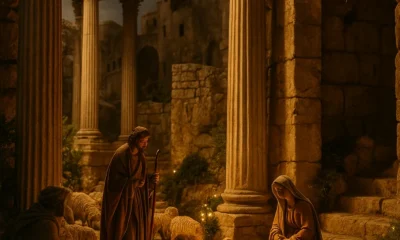
 Towns & Villages1 day ago
Towns & Villages1 day agoVera Nativity Scene 2025: A Monumental Journey to Ancient Rome
-
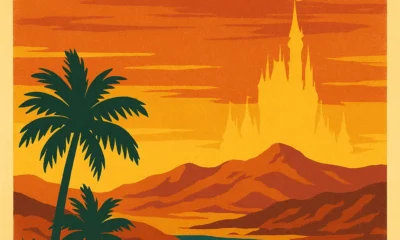
 Community5 days ago
Community5 days agoDisney in Almeria: The Forgotten Story of the Park That Almost Happened
-
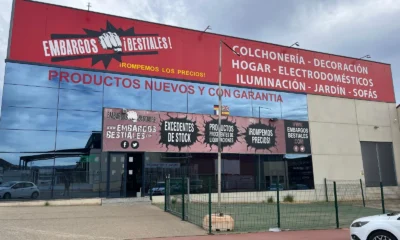
 Expats & Living6 days ago
Expats & Living6 days agoEmbargos Bestiales Antas – Affordable Furniture and Home Goods in Almería













